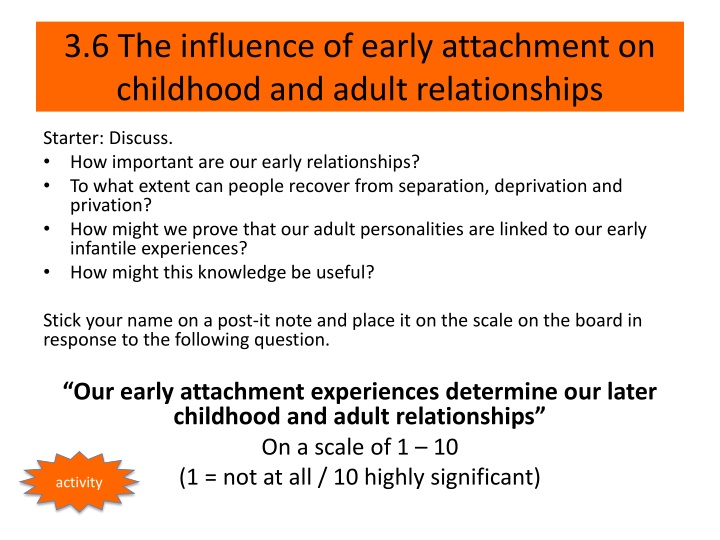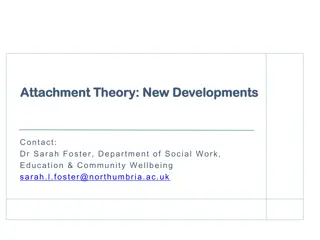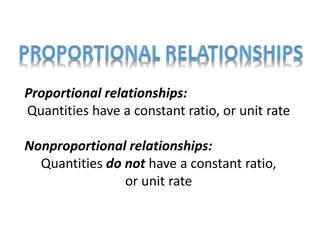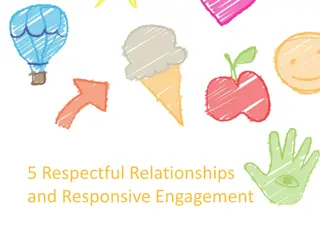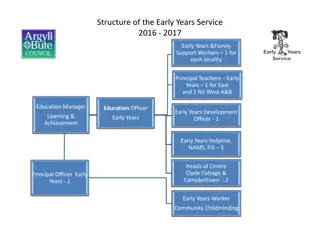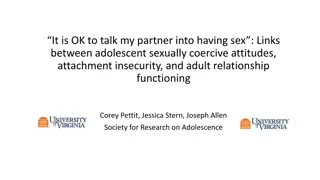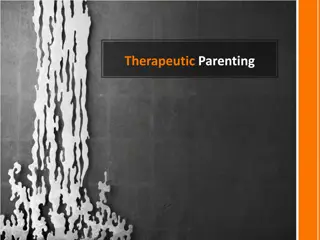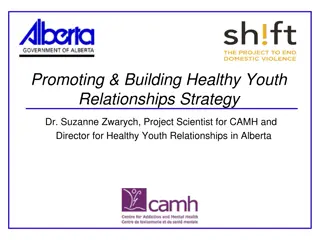The Influence of Early Attachment on Relationships
Explore the impact of early attachment on childhood and adult relationships, discussing the significance of early relationships, the potential for recovery from separation, and how adult personalities are linked to infantile experiences. Discover attachment theory, continuity hypothesis, internal working models, and the role of early bonds in shaping later relationships.
Download Presentation

Please find below an Image/Link to download the presentation.
The content on the website is provided AS IS for your information and personal use only. It may not be sold, licensed, or shared on other websites without obtaining consent from the author.If you encounter any issues during the download, it is possible that the publisher has removed the file from their server.
You are allowed to download the files provided on this website for personal or commercial use, subject to the condition that they are used lawfully. All files are the property of their respective owners.
The content on the website is provided AS IS for your information and personal use only. It may not be sold, licensed, or shared on other websites without obtaining consent from the author.
E N D
Presentation Transcript
3.6 The influence of early attachment on childhood and adult relationships Starter: Discuss. How important are our early relationships? To what extent can people recover from separation, deprivation and privation? How might we prove that our adult personalities are linked to our early infantile experiences? How might this knowledge be useful? Stick your name on a post-it note and place it on the scale on the board in response to the following question. Our early attachment experiences determine our later childhood and adult relationships On a scale of 1 10 (1 = not at all / 10 highly significant) activity
The Specification https://www.youtube.com/watch?v=3LM0nE81mIE A Valentine s Day Treat
Lesson objectives: Describe the research and theory on the influence of early attachments on later relationships Apply the concepts to different scenarios Evaluate the usefulness and validity of the theories and research Influence of Early Attachment on Later Relationships How do you earliest attachments affect your childhood friendships? How do your earliest attachments affect your adult relationships?
Attachment theory The continuity hypothesis. Relationship with peers Attachment with parents Later romantic relationships Attachments are an instinctive thing that are formed to help survival. The first attachment we form is to our parents and will depend on how sensitive the mothers care is (Ainsworth). The attachment type you develop in childhood (secure/insecure) will continue into later relationships (continuity hypothesis).
Internal working model Love in infancy is as important for mental health as vitamins and proteins for physical health John Bowlby Recap
Internal Working Model The monotropic attachment is unique; it is the first to develop and the strongest bond of all. Forms a model / template / blueprint for all future relationships. Continuity hypothesis there is consistency between early emotional experiences and later relationships. Recap
Why attachment matters! https://vimeo.com/88333079 https://vimeo.com/88337039
Relationships in later childhood activity Attachment type is associated with the quality of peer relationships in childhood: securely attached infants go on to form the best quality friendships while insecurely attached infants struggle. Myron-Wilson and Smith (1998) found that insecure-avoidant infants are most likely to be bullied while insecure-resistant infants are most likely to be bullies (questionnaire to 196 children aged 7-11 from London) Task: Why do you think this bullying pattern exists? Use your knowledge of the behaviour displayed by each attachment type
Childhood relationships Continuity between attachment style and quality of childhood relationships. Evidence (pg.139) Summarise here! Children who form attachments with each other early in life do not go on to form adult sexual relationships later. activity
Childhood relationships Continuity between attachment style and quality of childhood relationships. Evidence (pg.139) Youngblade securely attached children were more curious, competent, pro-social, self-reliant. Children who form attachments with each other early in life do not go on to form adult sexual relationships later. Mullis Late childhood attachment behaviour are transferred from parent to close friends. Westermarck children who form close friendships under age of 6 do not go on to form adult sexual relationships with each other. How useful is this debate?
Childhood Evaluation. Children with secure attachment seem to do better than those with insecure attachments. Deterministic. Individual differences. Early attachment types influence emotional, social and cognitive skills. Attachments on other children - evolutionary behaviour to prevent incest?
From our Mothers arms to our Lovers arms Questions: Extension Activity: What is the argument and evidence presented? Read the article. How could you criticise this?
Hazan and Shavers Love Quiz Procedure: analysed 620 replies to a love quiz printed in a local newspaper. The quiz had three sections: 1. Assessing respondents current or most significant relationship 2. General love experiences 3. Assessing attachment type by responding to one of three statements A Valentine s Day Treat Task: Use page 140 to complete the following task.
Hazan & Shaver The LOVE Study Summarise Activity: Draw your hand on the page Aim: Sample: Method: Results: Conclusions: Using just the space within your fingers summarise this study! activity
Hazan & Shaver : GRAVER Social desirability Correlation not causation Volunteer Sample Evidence for continuity hypothesis? Standardised questions Questionnaire More women than men Checklist for answers
Other Adult evidence. In support of continuity hypothesis. Against continuity hypothesis. activity
Other Adult evidence. In support of continuity hypothesis. Against continuity hypothesis. McCarthy women with insecure avoidant attachment had less successful romantic relationships. Wood quality of romantic relationships is from interaction of two people. Kirkpatrick 300 dating couples those with secure attachment = more successful & stable relationships. IWM - not fully supported. Steele 0.17 impact. Other factors parental divorce and other negative life events. Belsky women with secure attachment reported less conflict in relationship able to manage conflict. Temperament hypothesis. Brennan individuals classed as insecure-avoidant engage in sex without needing the love. Kunce women classed as insecure attachment became compulsive caregivers mothered their partners.
Question: How does the internal working model impact future relationships? Task: answer the question above using your own knowledge IWM = this template will be the basis of our assumptions about all relationships so we will seek out, and form, relationships that mirror that. We will also behave in a way that mirrors our IWM (e.g. insecure-resistant may be controlling or argumentative in relationships)
(AO3) Evaluation of the internal working model: how do we study it? Bowlby argued that the internal working model is unconscious (e.g. we aren t aware of it existing and can t describe/explain their effect on us). Why is this a problem for us as researchers? Because how can we expect people to report on something they are not aware of? People can only describe how they consciously understand their relationships (and this will be influenced by loads of other variables media, previous experiences, expectations, etc) so, at best, we get a partial picture of the internal working model
Big evaluation point: causation Just because there is a relationship between two factors, does that mean there is a causal relationship (e.g. one causes the other)?
activity (A02) Apply it! Ned and Nadia are 2 year old children. They are both assessed for attachment type using the Strange Situation. Ned is categorised as insecure-avoidant (type A) while Nadia is secure (type B). Using Bowlby s theory of the internal working model, describe how this may affect their future romantic relationships (4 marks) Ned: will struggle forming effective romantic relationships (1 mark) may not be able to form one at all and he may be cold/not affectionate if he does (1 mark) Nadia: should be able to successfully form and maintain a romantic relationship (1 mark) as she already has a secure model in her head, she can confidently apply it later in life (1 mark)
Further evaluation Conclusion task: using the evidence below and from throughout the lesson, write a paragraph responding to the question: how important are early attachments for later relationships? . Try to balance it with at least two points of view activity
Lesson objectives: Describe the research and theory on the influence of early attachments on later relationships Apply the concepts to different scenarios Evaluate the usefulness and validity of the theories and research Unit summary: attachment Caregiver-infant interactions Attachment figures Schafer s stages of attachment Animal studies of attachment Learning theory of attachment Bowlby s Monotropic theory of attachment Ainsworth s Strange Situation Cultural variations in attachment Bowlby s theory of Maternal Deprivation Effects of Institutionalisation on attachment Effects of early attachment on later relationships
3.6 The influence of early attachment on childhood and adult relationships Plenary Do you want to change your post-it note? Why or why not? Our early attachment experiences determine our later childhood and adult relationships. On a scale of 1 10 (1 = not at all / 10 = highly significant)
Plenary 2: A final Quiz. What is Bowlby s idea of the internal working model? The mental representation you have of relationships, formed from your attachment with your primary caregiver during the critical period What are the three attachment types identified by Ainsworth? Secure, insecure-resistant, insecure-avoidant What did Hazan and Shaver do? They conducted a Love quiz in the local newspaper, asking people about their childhood attachments and views on romantic love What did Hazan and Shaver find? There was a strong correlation between childhood attachment and ideas on romantic love/success in adult relationships secure = good and longer lasting romantic relatonships.
